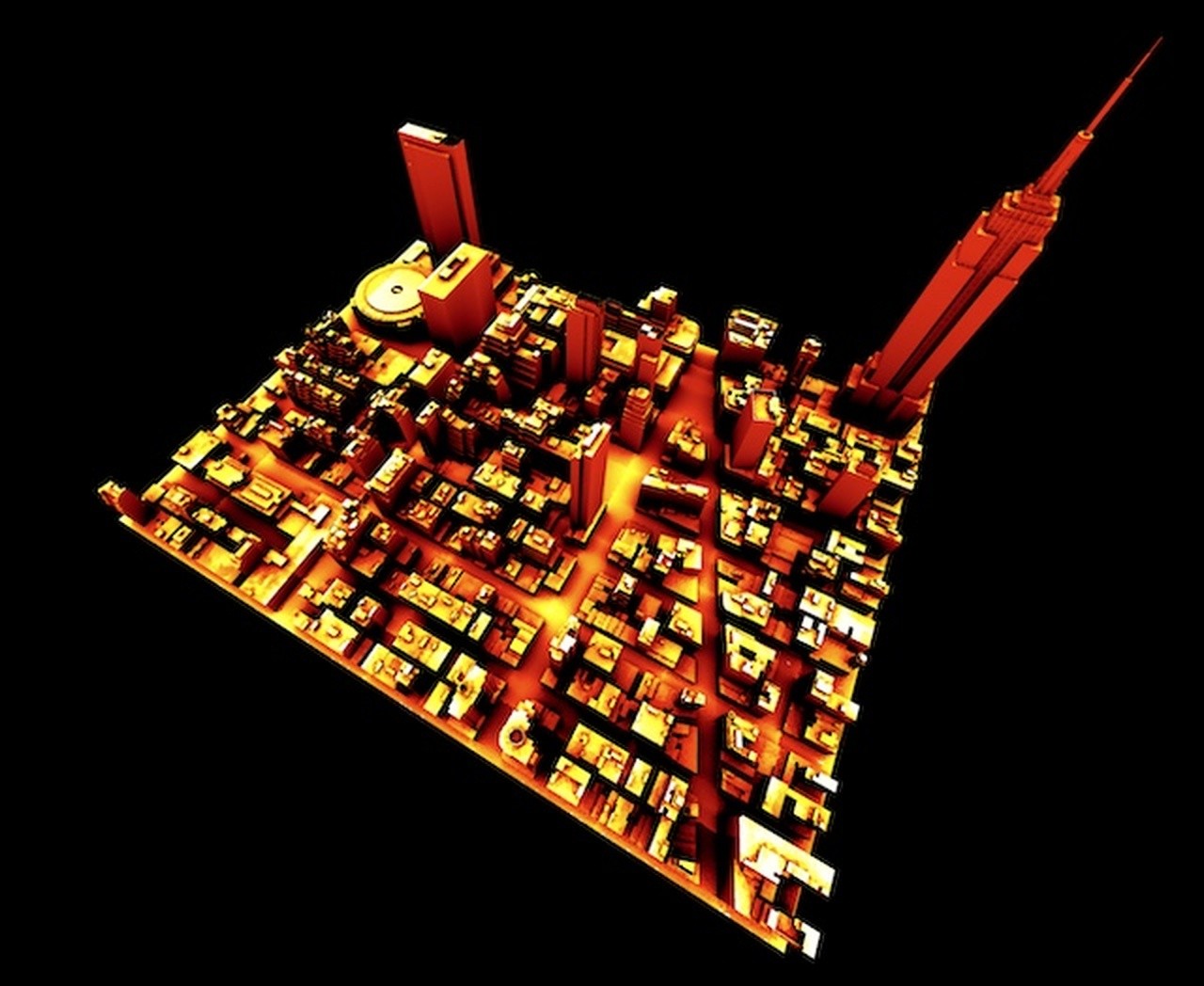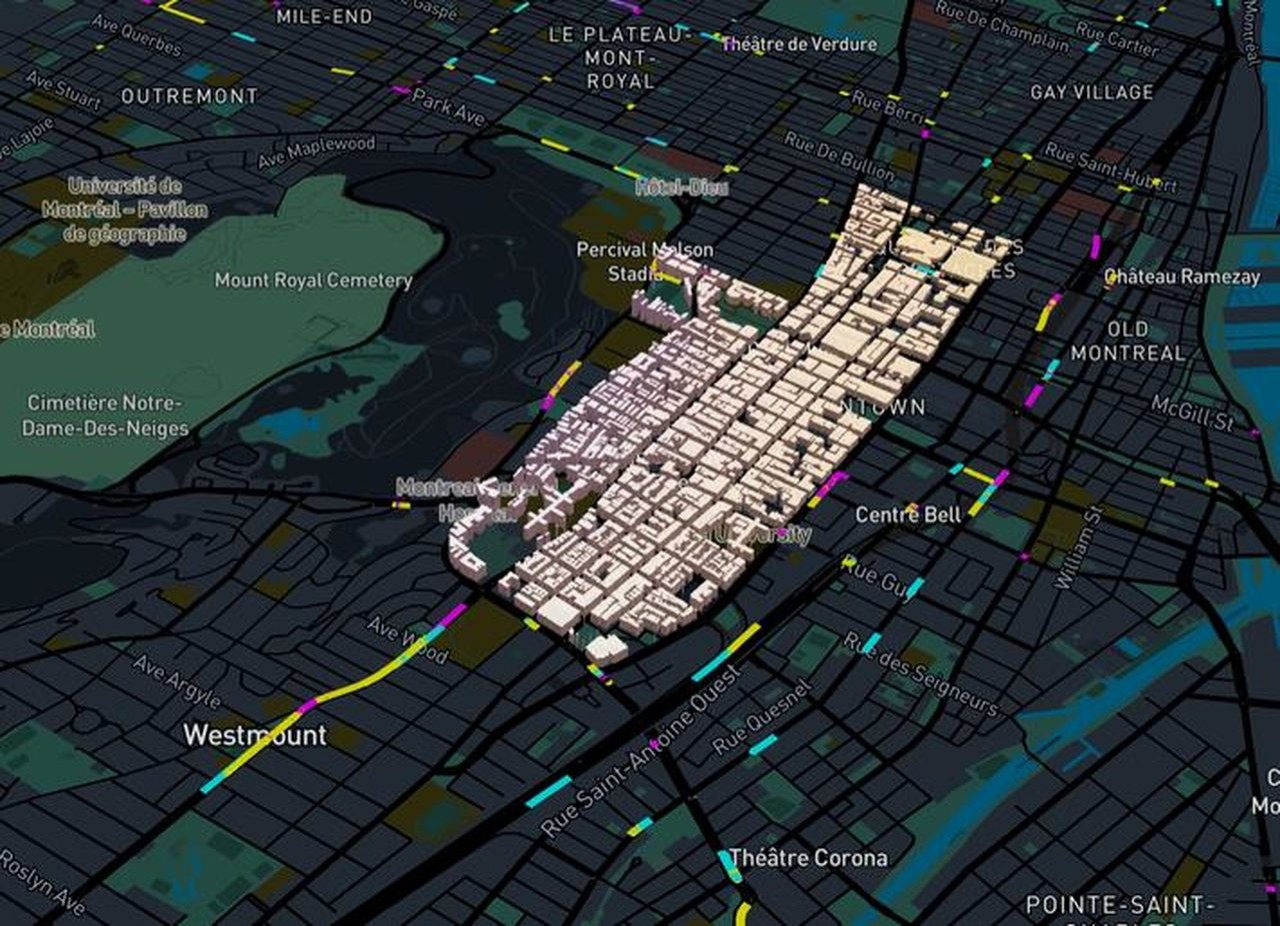Urban Platform
Without understanding how city networks function from a broad and holistic view, how can we expect to change them for the better of civilians and for the planet? It is the objective of this platform that modeling cities will become more easy and accessible for those interested in the use and applications of this technology.
Overview and objective
The Urban Platform, also referred to as INSEL4Cities, is an urban simulation platform currently under development by the CERC team. INSEL is a graphical programming language used for the simulation of renewable energy systems, it offers ready-made simulation models or users can design completely new models for whatever kind of system they are working with. The objective of INSEL4Cities is to offer cities a platform that can be used to model the city in a holistic way, including features such as buildings and their demands, transportation, networks, waste management, and greenery and ecosystem services.
 Heat exchange simulation of 3x8 building blocks
Heat exchange simulation of 3x8 building blocks
Platform characteristics
The characteristics of the platform were deliberately designed with the intention of making it as user-friendly and adaptable as it can be. Its modularity allows development of different aspects of the city independently, permitting parallel development as well as individual updates and improvements. The platform is also flexible and extensible, as its use can be extended for other purposes, and it can accommodate new features and models. It is also based on standards so that it can be coupled with other tools and programs.
Two main supporting components
INSEL4Cities is supported by two main components: a digital twin of the city and a set of simulation tools. The digital twin is not just a replica of the visual reality, but also an interface of the information that is connected to it. This means that aside from storing the physical aspects of the city it also stores the information connected to the physical aspects. The digital twin handles all the information required for the simulation and saves the intermediate and final results. The digital twin is used to simplify the workflow. The typical data assignment workflow starts with data recovery from diverse sources, and then that data is preprocessed and formatted based on the specific needs to be able to work with your tool, and finally the data can be used in the simulation tool of your choice. Normally, there are many sources of data that all need to be pre-processed. N sources of data and M modelling tools provides N*M different pre-processing progressions of data. This is where the digital twin comes in and reduces workflow, as it provides an in-between step that allows the connection between multiple sources of data and multiple output data tools, simplifying N*M connections to N+M connections, which can significantly reduce the workload. The simulation tools that support the platform at the moment are INSEL, SRA,1 and EnergyPlus. INSEL, as previously described, is a graphical programming language used for the simulation of renewable energy systems, it offers ready-made simulation models or users can design completely new models for whatever kind of system they are working with. SRA is the implementation of a Simplified Radiosity Algorithm used for predicting solar radiation, interior daylight and longwave radiation in an accurate way and with a low computational cost. EnergyPlus is a whole building energy simulation program used to model energy consumption for heating, cooling, ventilation, and lighting, as well as water use in buildings.
 Traffic simulation for the City of Montreal
Traffic simulation for the City of Montreal
[1] Darren Robinson and Andrew Stone. Holistic radiation modelling with a fast simplified radiosity algorithm. In Proc. Ninth Int. IBPSA Conf., Building Simulation. Citeseer, 2005.

